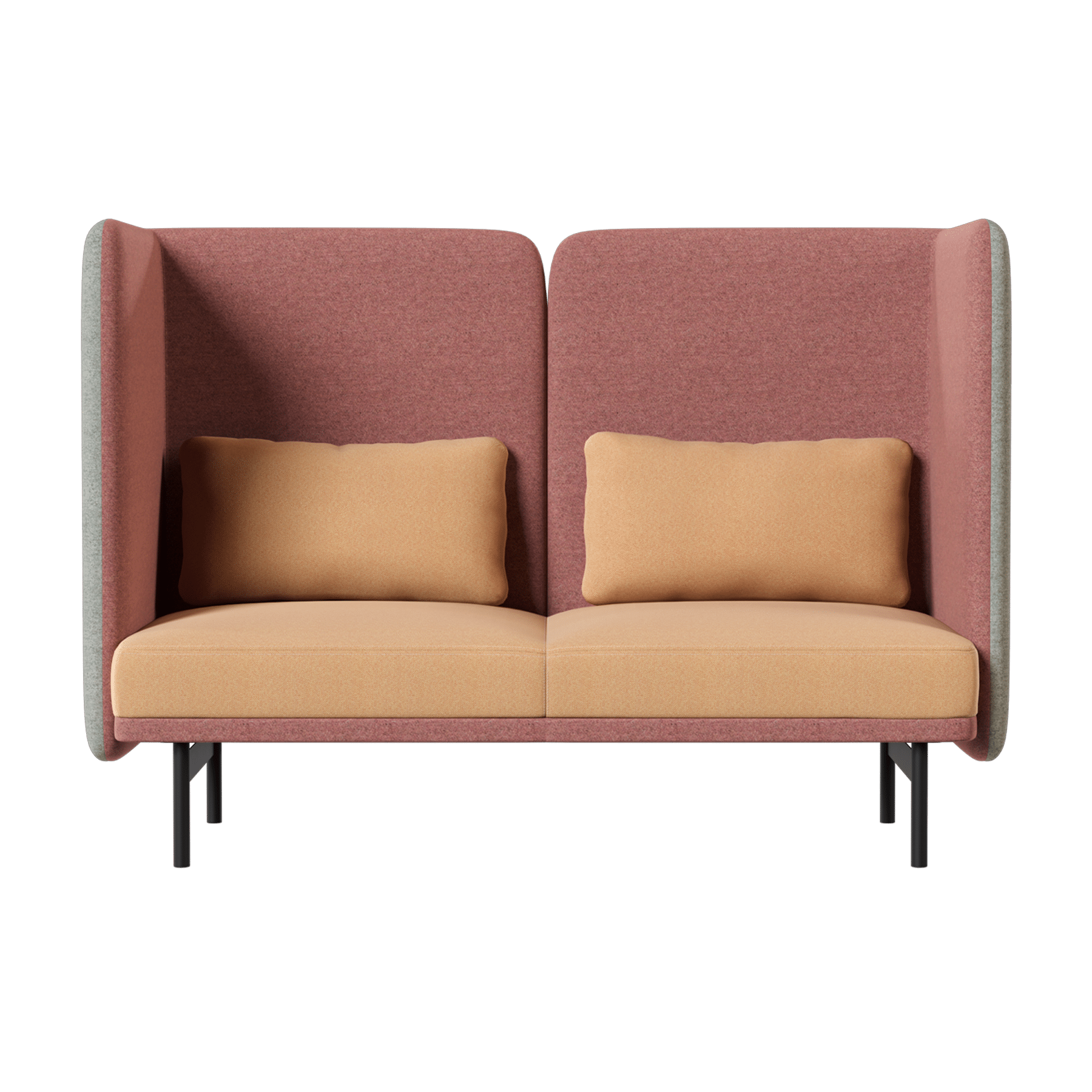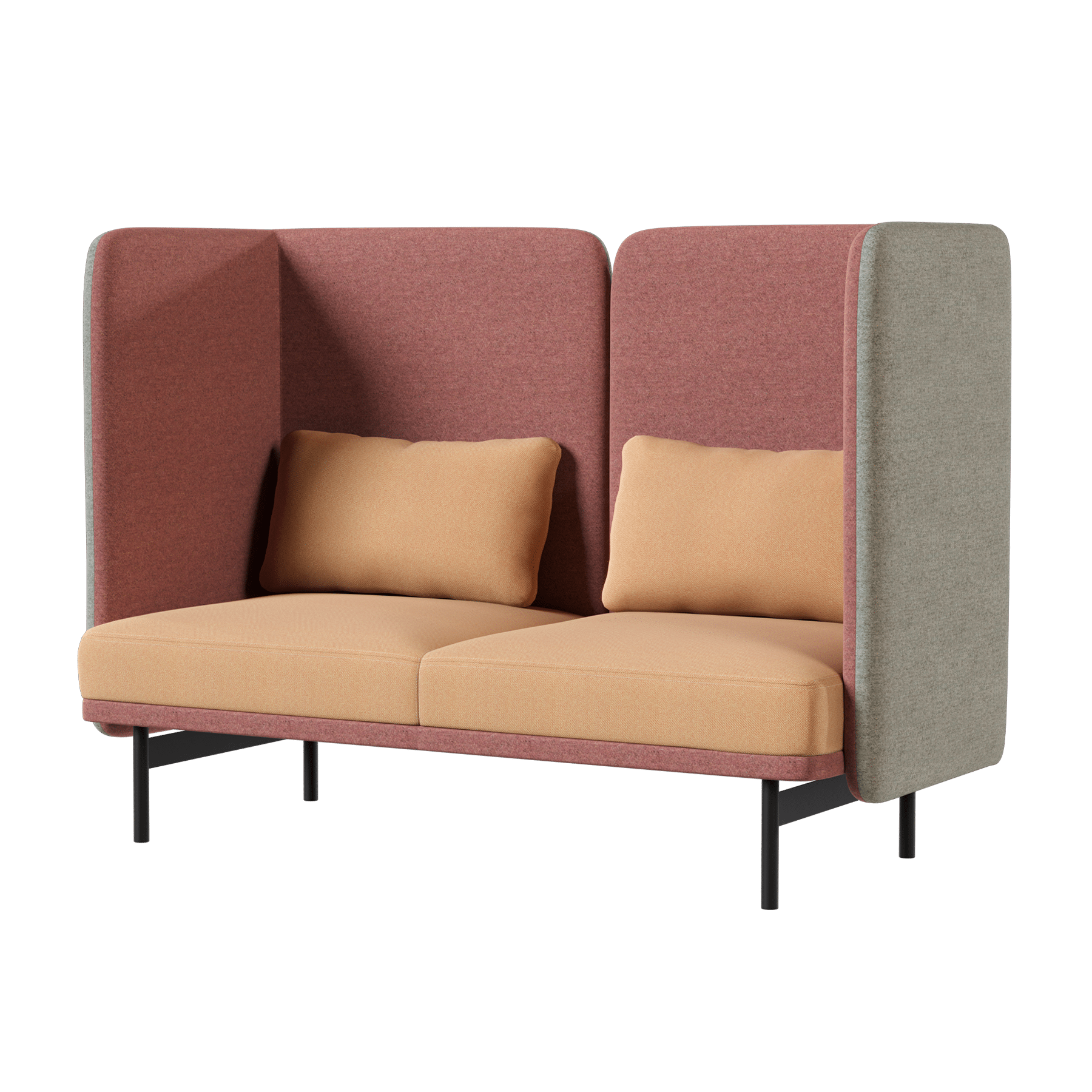Modular furniture offers a long-term advantage

More and more interior architects are opting for modular solutions when furnishing offices and public spaces. And for good reason: alongside their immediate benefits, modular furniture stands out for its long-term flexibility and cost-efficiency.
At the heart of the modular concept lies freedom – the freedom to be creative and to configure exactly the kind of setup that meets the user’s needs, even as those needs evolve over time.
Today’s working life is defined by constant change. While a standard solution might fit the moment, modular furniture clearly takes the lead when it comes to flexibility, adaptability, individuality, and smart use of resources.
A perfect fit for any space
Many standard furniture solutions require specific conditions – starting with the dimensions of the space. No matter how big or small the room is, every centimetre counts. And when furniture can adapt to the space, instead of the other way around, making the most of it becomes much easier.
Modular furniture allows for precisely that. With components that fit together seamlessly – and are available in custom sizes when needed – you can configure layouts that make the best use of every centimetre. While standard furniture may come in a few predefined sizes, modular options offer far greater flexibility.
Unusual room shapes can also complicate the furnishing process. Modular systems make bespoke solutions easy – whether it’s a winding row of seats or a compact workstation tucked into an unused niche.

Intuit’s solution: Meeter
The most adaptable product in Intuit’s product range is undoubtedly the Meeter – a modular, banquette-style seating.
- With a shorter-than-average seat cushion, Meeter is compact and fits easily into a variety of spaces, including corridors, wall edges, and other narrow areas.
- Available in both straight and curved modules, it can be used to create flowing or curved seating arrangements.
- The backrest comes in three options, allowing for both private and semi-private seating configurations.
- Custom straight modules are available in any length up to two metres.

Intuit’s solution: Ben
The Ben sofa is also modular system that works especially well in lounges and relaxation areas.
- Its medium-depth seating ensures comfort and brings a sense of luxury to spacious, open-plan environments.
- A wide selection of straight, corner and end modules – along with poufs – allows for a countless layout possibilities.
Greater flexibility
One of the key advantages of modular furniture is its flexibility. Workstations and seating areas can be set up and used wherever they’re needed – whether for individual use, one-on-one meetings, or group collaboration. Furniture on wheels is easy to move and adapt to the number of users, making it ideal for hybrid work environments. Mobile workstations are perfect for office nomads – people without assigned desks who need a quiet space to concentrate. Arranging several workstations opposite each other creates a suitable area for teamwork or private conversations.
Multifunctional modular systems add yet another layer of flexibility – serving not only as workspaces, but also supporting a variety of other uses.

Intuit’s solution: Wander
Wander is a cosy niche sofa that offers a wide range of interior design possibilities.
- Featuring soft, loose back cushions, Wander modules come in three widths and several variations.
- Equipped with an integrated table and power sockets, it functions as a practical work island.
- Thanks to its wheels, Wander modules are easy to move around, including arranging multiple modules opposite each other.

Intuit’s solution: Frankie
The Frankie sofa is modular and multifunctional.
- Single and double modules can be combined into a single unit or used separately, depending on what’s needed.
- One of Frankie’s strengths is its high walls, which offer a sense of privacy.
- Equipped with a movable side table and power sockets, Frankie creates a cosy spot for working or a quick nap.
Only unique solutions
Modular furniture gives interior designers the freedom to be creative, making it easy to design distinctive, tailor-made solutions for each project. A space can take on its own identity through a mix of shapes, colours, and textures. The smarter the module design, the greater the number of possible combinations. Even colour choices can shape the mood of a room: soft pastels create a calming atmosphere (ideal for waiting areas), while bold, vibrant tones energise the space (perfect for environments designed for children).

Intuit’s solution: Manhattan Penta
The multifunctional Manhattan Penta pouf system brings a sense of playfulness to any space, without compromising on practicality.
- Ideal for foyers, waiting rooms, and large public areas, it offers generous seating capacity.
- Table modules with integrated power sockets can be placed between the poufs to enhance functionality.
- Three different backrest heights are available to match varying privacy needs.
- The unique pentagonal modules connect seamlessly, allowing for virtually endless layout possibilities.

Intuit’s solution: Spot
Just four thoughtfully designed modules are all it takes to create seating solutions that offer either privacy or opportunities for interaction.
- Spot modules can be used to divide spaces into zones or to furnish waiting areas.
- Practical surfaces complement the seating – perfect for placing a coffee cup or laptop. A larger table module is also available.
- The seating is framed by surrounding shelves, which can be used to display plants or other decorative elements.
Better cost efficiency
As modular furniture can be easily reconfigured, it offers a cost-effective solution for evolving needs. The number of people using a space may change over time, and completely redesigning the interior is rarely the most economical choice. A standard sofa can’t be extended, and adding an extra one may be both costly and space consuming. Modular seating, however, can be expanded by simply adding new modules, saving both money and space. Just as importantly, it helps maintain a consistent design language throughout the interior.
Which of Intuit’s modular solutions is the best fit for your project?
Explore the full collection on pCon. For personalised recommendations, contact us at or get in touch with your nearest reseller.
Successful companies understand the importance of office design












